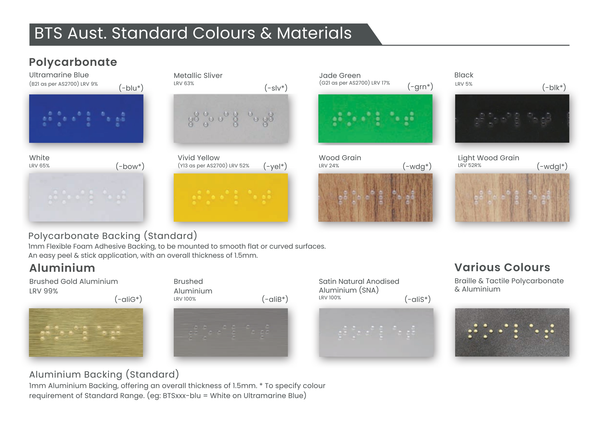Luminance Contrast – Braille Tactile Signs Aust.
A minimum of 30% Luminance Contrast is required between the tactile graphics & the sign face, as well as the sign face on the surface it is mounted to; as per Standards Australia AS1428.1 & AS1428.4.1, a.
Understanding Luminance Contrast:
Luminance contrast is defined in Australian Standard 1428.1-2009 as ‘the light reflected from one surface or component, compared to the light reflected from another surface or component’, however this is commonly misinterpreted as a colour contrast. The surface brightness is measured by its luminous reflectance. Luminance Contrast is a measure of the difference in brightness of two surfaces, resulting in a Luminance Reflectance Value (LRV). Once the (LRV) is identified for each surface or component, you are able to calculate the Luminance Contrast between the two.

Need Help with the LRV for your colours?
BTS Aust. Wayfinding & Design Consultancy team can assist with providing Luminance Values, as a guide for your current requirements.
Disclaimer: It is the responsible of the client to ensure a compliant luminance contrast between the sign face and the surface it is mounted to. The environment BTS are mounted will vary from project to project – eg: the lighting conditions in which the sign is to be located.
LRV Calculator (Bowman-Sapolinski)
This calculator can be used to calculate the Luminance Reflectance Value (LRV) between two colours / elements, to obtain the Luminance Contrast percentage. To use this easy LRV calculator, you will require the LRV for each element you are comparing.
 Site under construction
Site under construction

